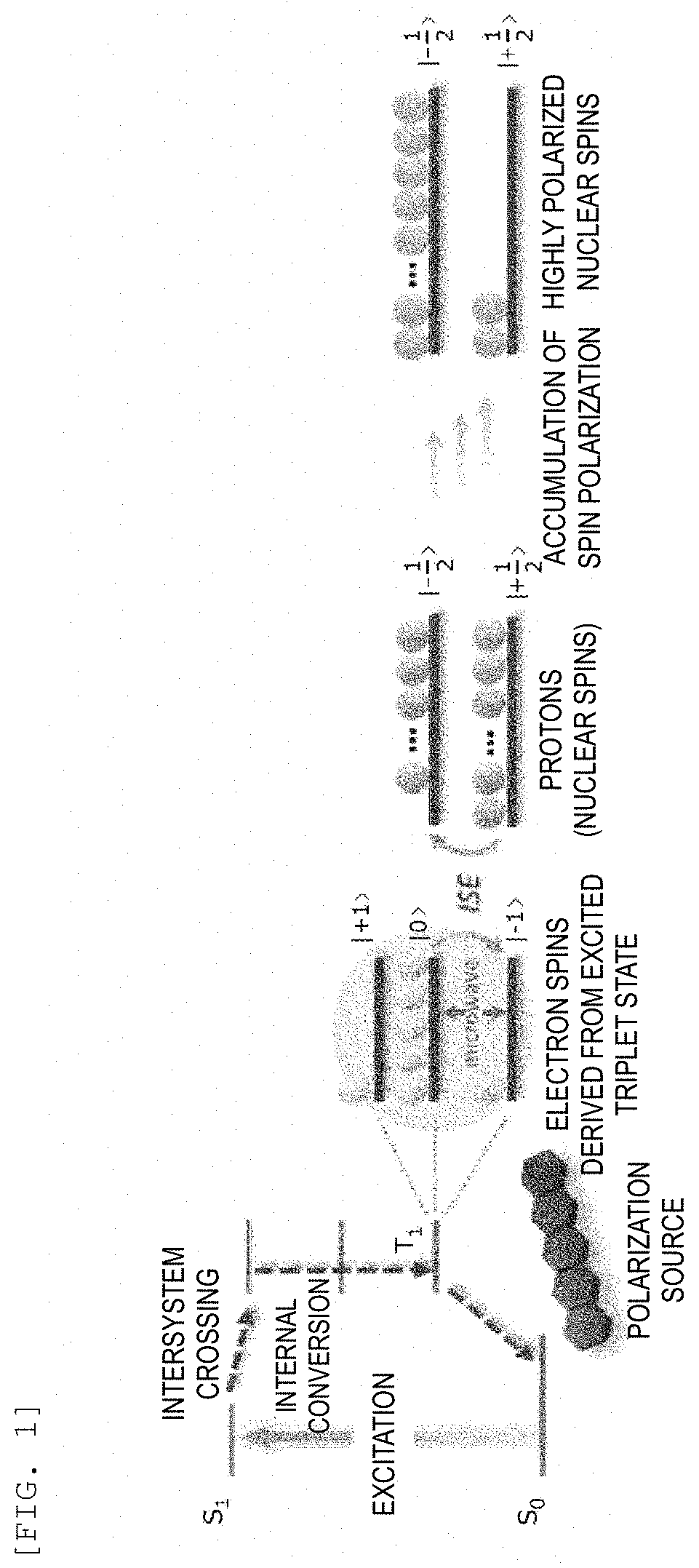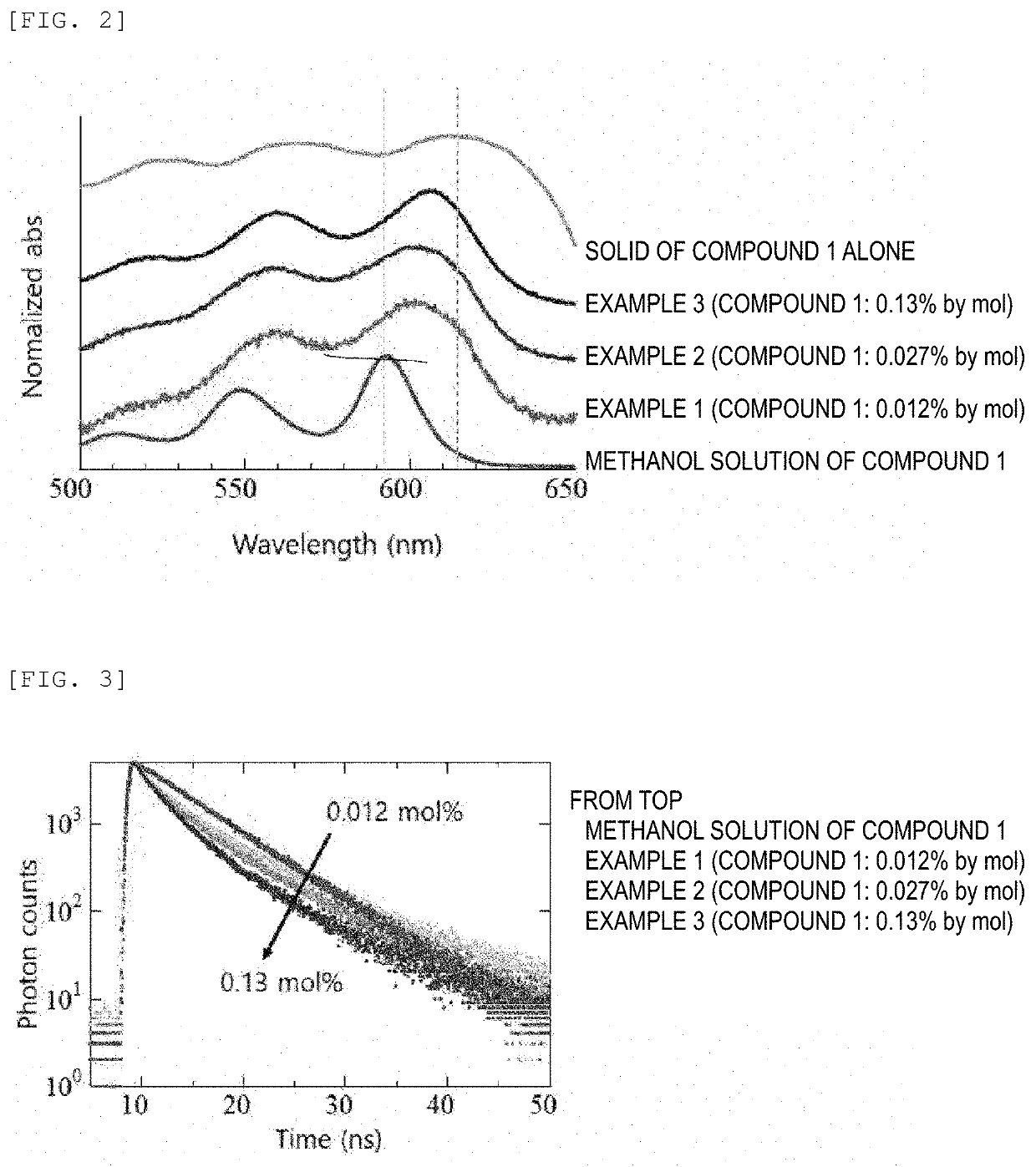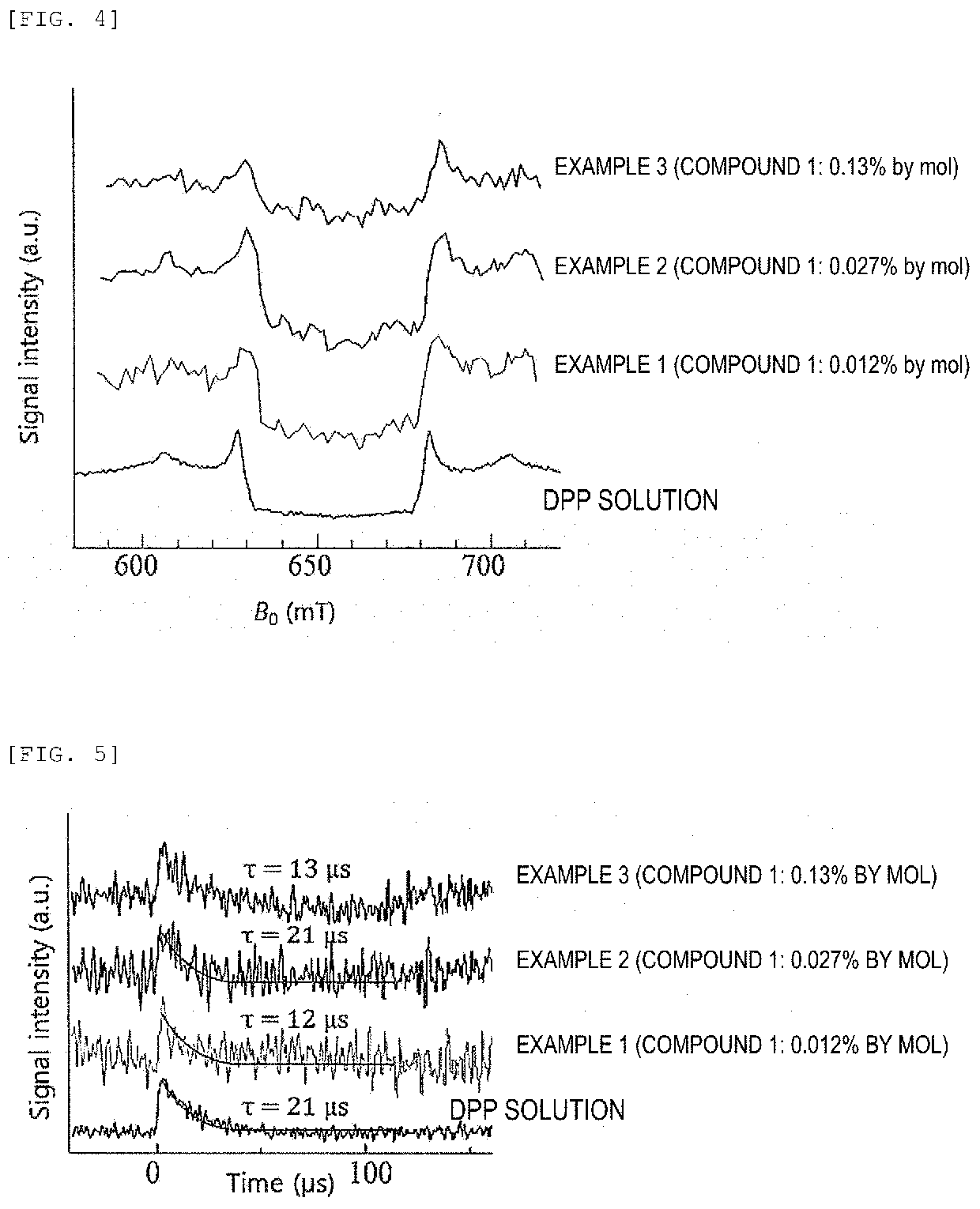Composition, composition for dynamic nuclear polarization, polarization enhancing method, highly polarized substance, and nmr measurement method
a dynamic nuclear and composition technology, applied in the field of composition, can solve the problems of restricting the sensitivity of nmr spectroscopy and mri, and achieve the effects of enhancing the polarization of nuclear spins, and long spin-lattice relaxation tim
- Summary
- Abstract
- Description
- Claims
- Application Information
AI Technical Summary
Benefits of technology
Problems solved by technology
Method used
Image
Examples
synthesis example 1
Synthesis of Compound 1
[0156]An intermediate 1 was synthesized by the following reaction.
[0157]4-Bromobenzaldehyde (5.0 g, 27 mmol), ethylene glycol (3.3 g, 54 mmol), p-toluenesulfonic acid (0.18 g, 0.95 mmol), and toluene (75 mL) were placed in a vessel, and refluxed under heating for one day. The reaction liquid was neutralized with 50 mL of potassium carbonate aqueous solution, and then extracted three times with 50 mL of ethyl acetate. The collected organic layer was dried over magnesium sulfate and then filtered, and the solvent was evaporated under reduced pressure to provide a crude product in the form of an orange oil. The crude product was purified by column chromatography using a mixed solvent of dichloromethane and hexane=1 / 1 as an eluent, so as to provide an intermediate 1 (2-(4-bromophenyl)-1,3-dioxolane) in the form of a yellow oil in a yield amount of 5.9 g and a yield of 95%.
[0158]An intermediate 2 was then synthesized by the following reaction.
[0159]In a nitrogen at...
synthesis example 2
Synthesis of Ligand 2
[0164]An intermediate 3 was synthesized by the following reaction.
[0165]Tetraethylammonium (12.9 mL, 92.5 mmol) and N-dimethylsulfamoyl chloride (10 mL, 90.5 mmol) were added dropwise to a solution obtained by dissolving imidazole (5 g, 73.4 mmol) in anhydrous dichloromethane (50 mL). After stirring the mixture at room temperature for one day, a 10% potassium carbonate aqueous solution was added thereto, and the organic layer was separated. The organic layer was dried over sodium sulfate, and the solvent was evaporated in vacuum to provide a crude product in the form of an orange oil. The crude product was purified by column chromatography using a mixed solvent of chloromethane and methanol=20 / 1 as an eluent, so as to provide an intermediate 3 (N,N-dimethylimidazole-1-sulfonamide) in the form of a yellow oil in a yield amount of 8.6 g and a yield of 67%.
[0166]An intermediate 4 was then synthesized by the following reaction.
[0167]In a nitrogen atmosphere at −78° ...
examples 1 to 6
Production of Composition Using Polarization Source of Compound 1 and Metal-Organic Framework Formed of Ligand 1 and Zinc Ion
[0172]6.5 mL of a methanol solution containing zinc nitrate hexahydrate Zn(NO3)2.6H2O (225 mg, 0.76 mmol) was injected to 8.5 mL of a methanol solution containing the ligand 1 (250.5 mg, 3.05 mmol), and the compound 1 and sodium hydroxide in the amounts shown in Table 1, followed by stirring at room temperature for 1 hour. The resulting milky violet mixture was subjected to centrifugal separation to separate a crystalline solid matter, which was rinsed with methanol three times and then dried under reduced pressure to provide a composition 1 in the form of a crystalline solid matter in a yield amount of 56 mg and a yield of 32%.
PUM
 Login to View More
Login to View More Abstract
Description
Claims
Application Information
 Login to View More
Login to View More - R&D
- Intellectual Property
- Life Sciences
- Materials
- Tech Scout
- Unparalleled Data Quality
- Higher Quality Content
- 60% Fewer Hallucinations
Browse by: Latest US Patents, China's latest patents, Technical Efficacy Thesaurus, Application Domain, Technology Topic, Popular Technical Reports.
© 2025 PatSnap. All rights reserved.Legal|Privacy policy|Modern Slavery Act Transparency Statement|Sitemap|About US| Contact US: help@patsnap.com



